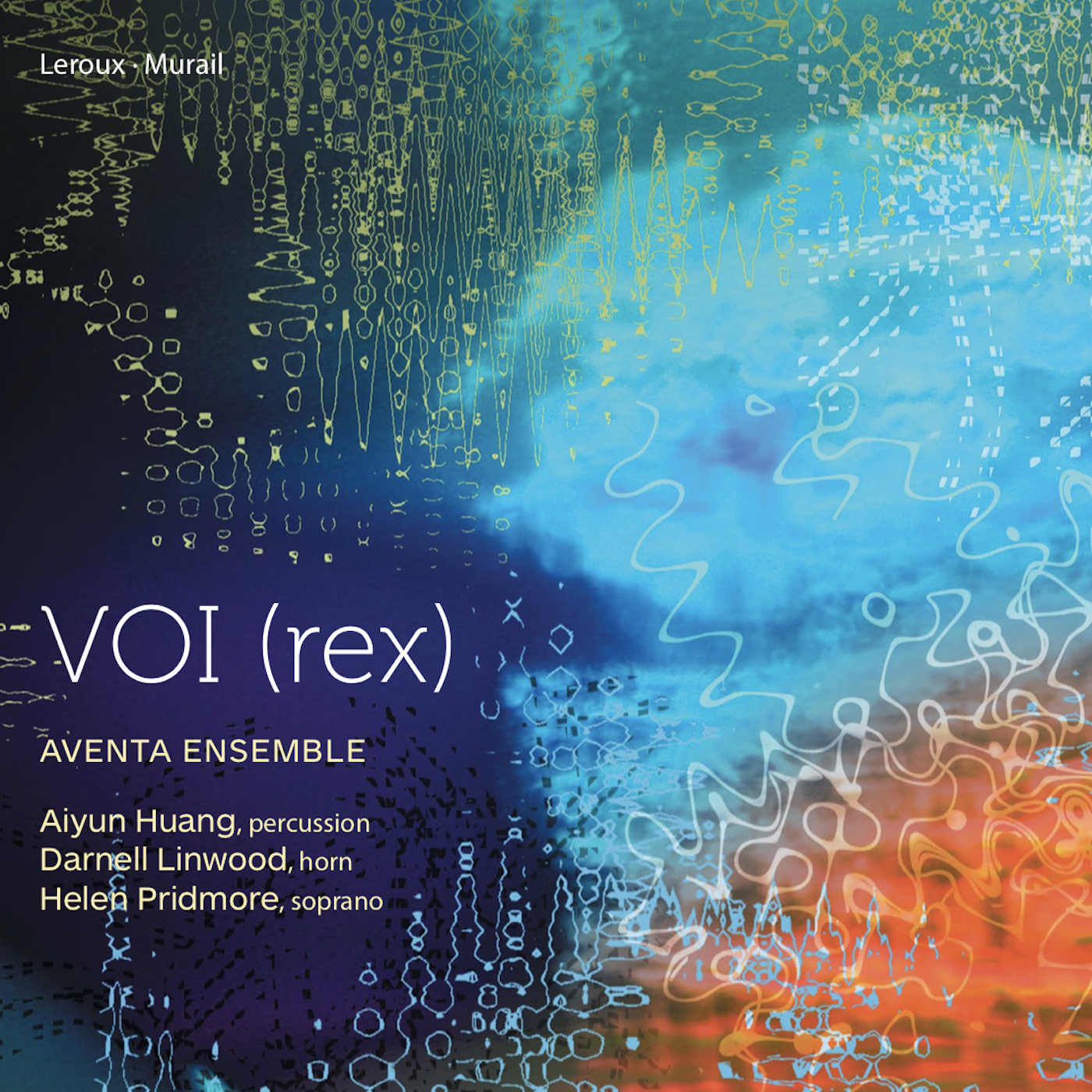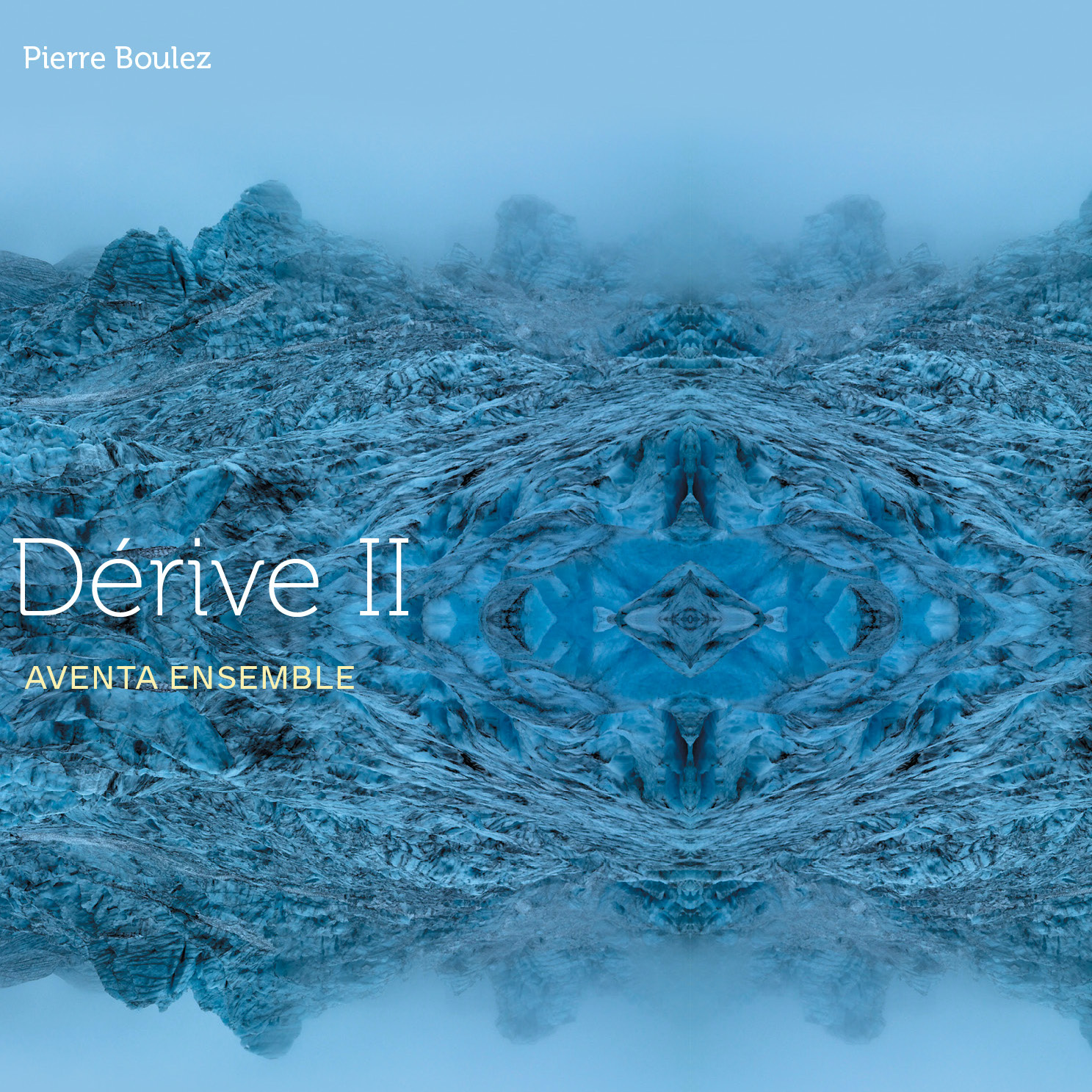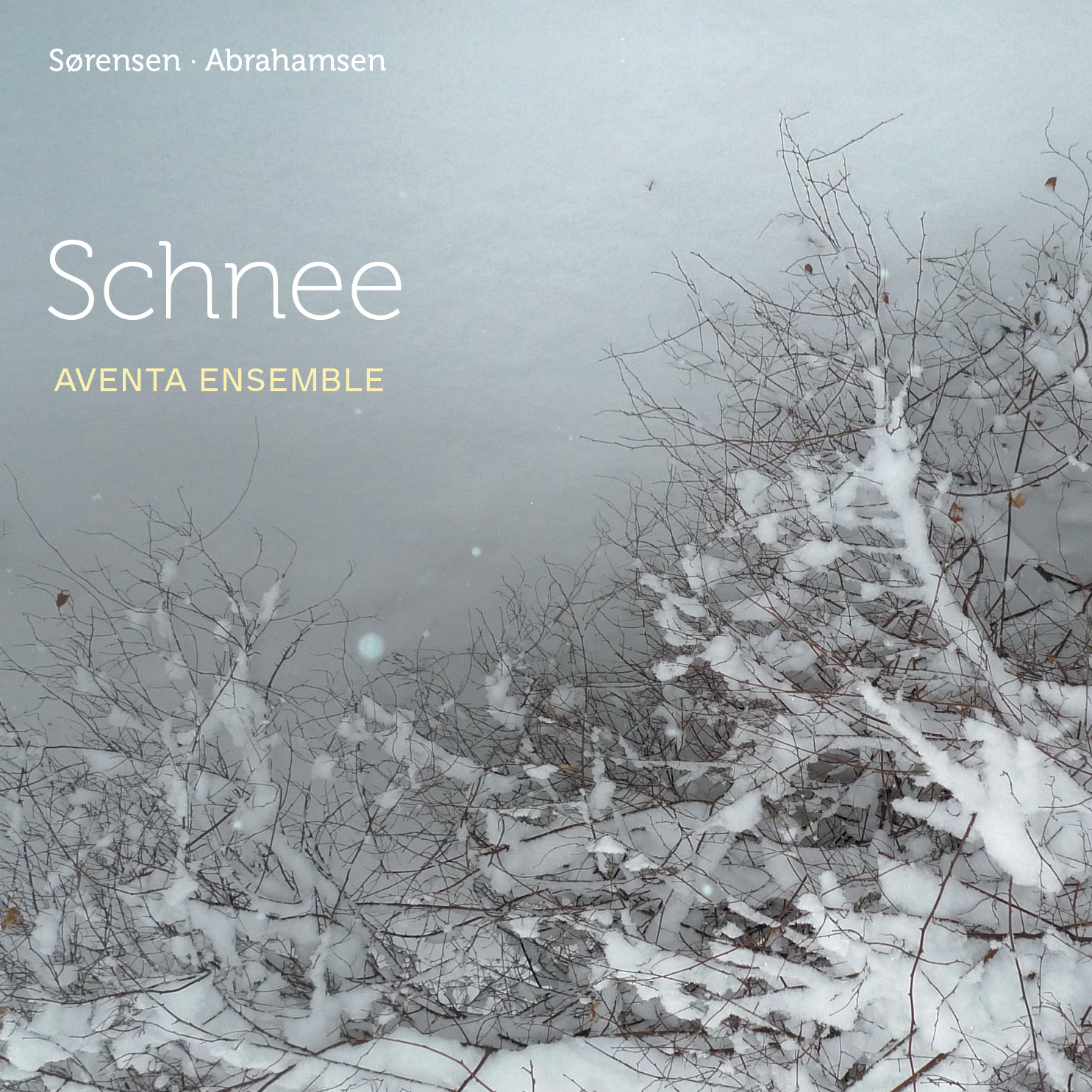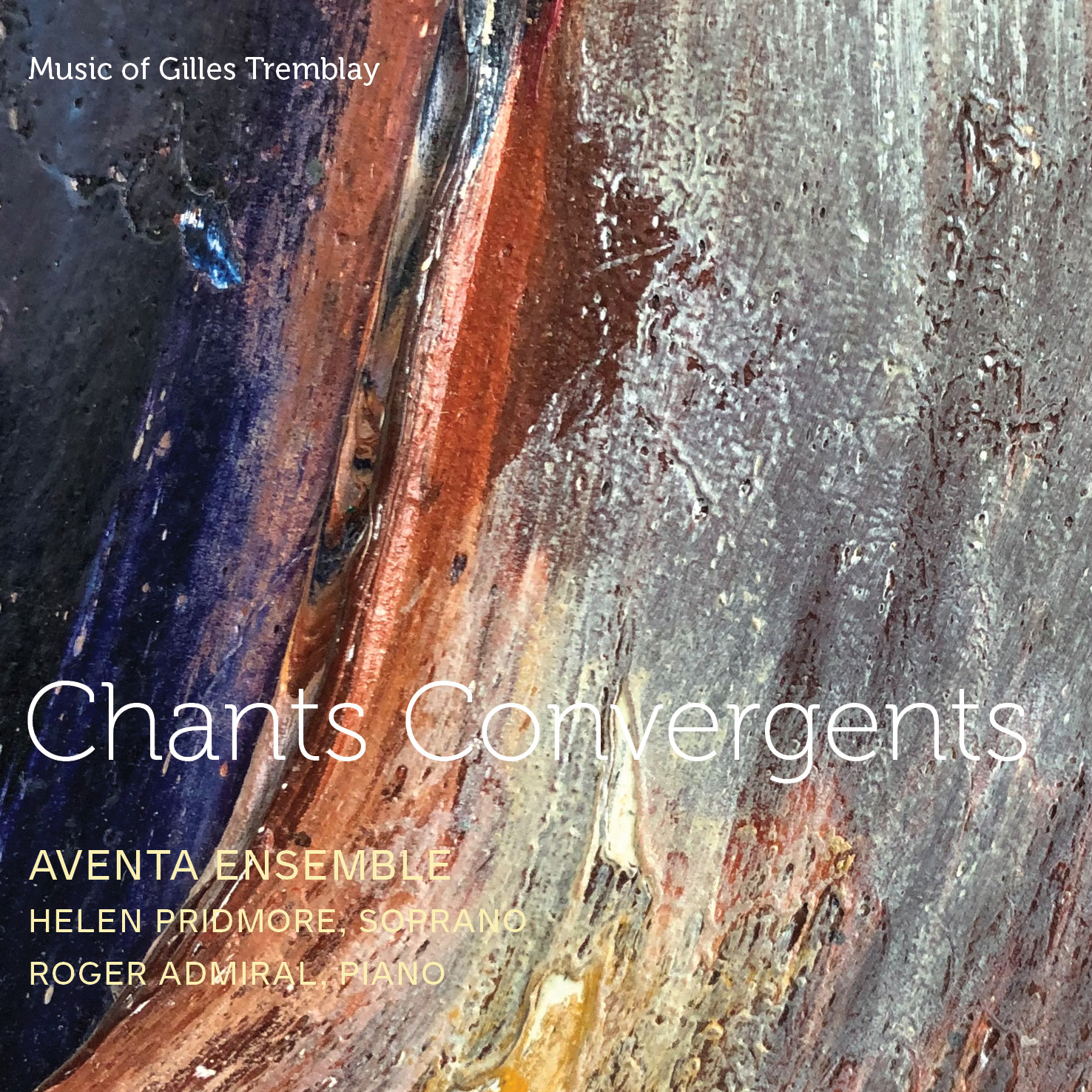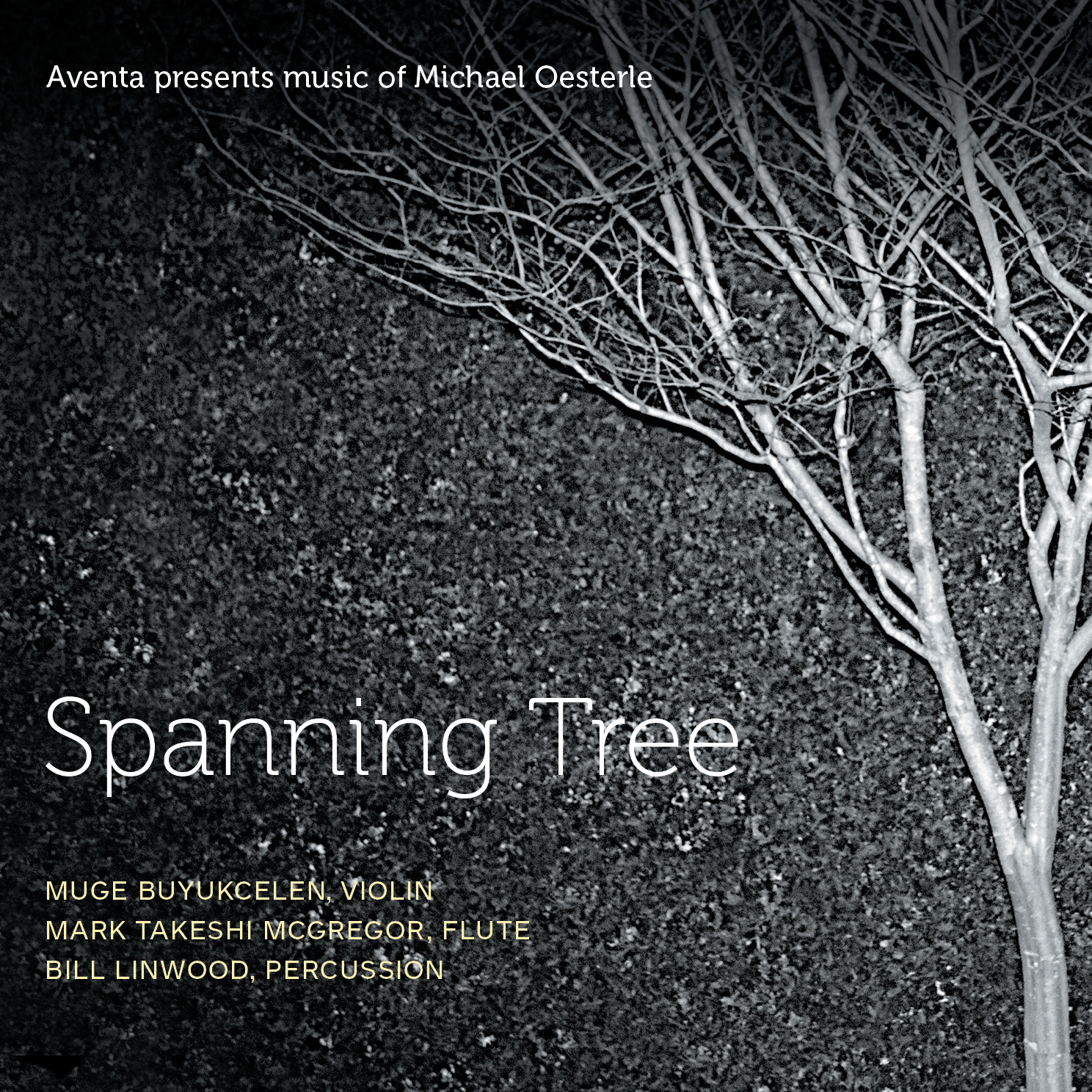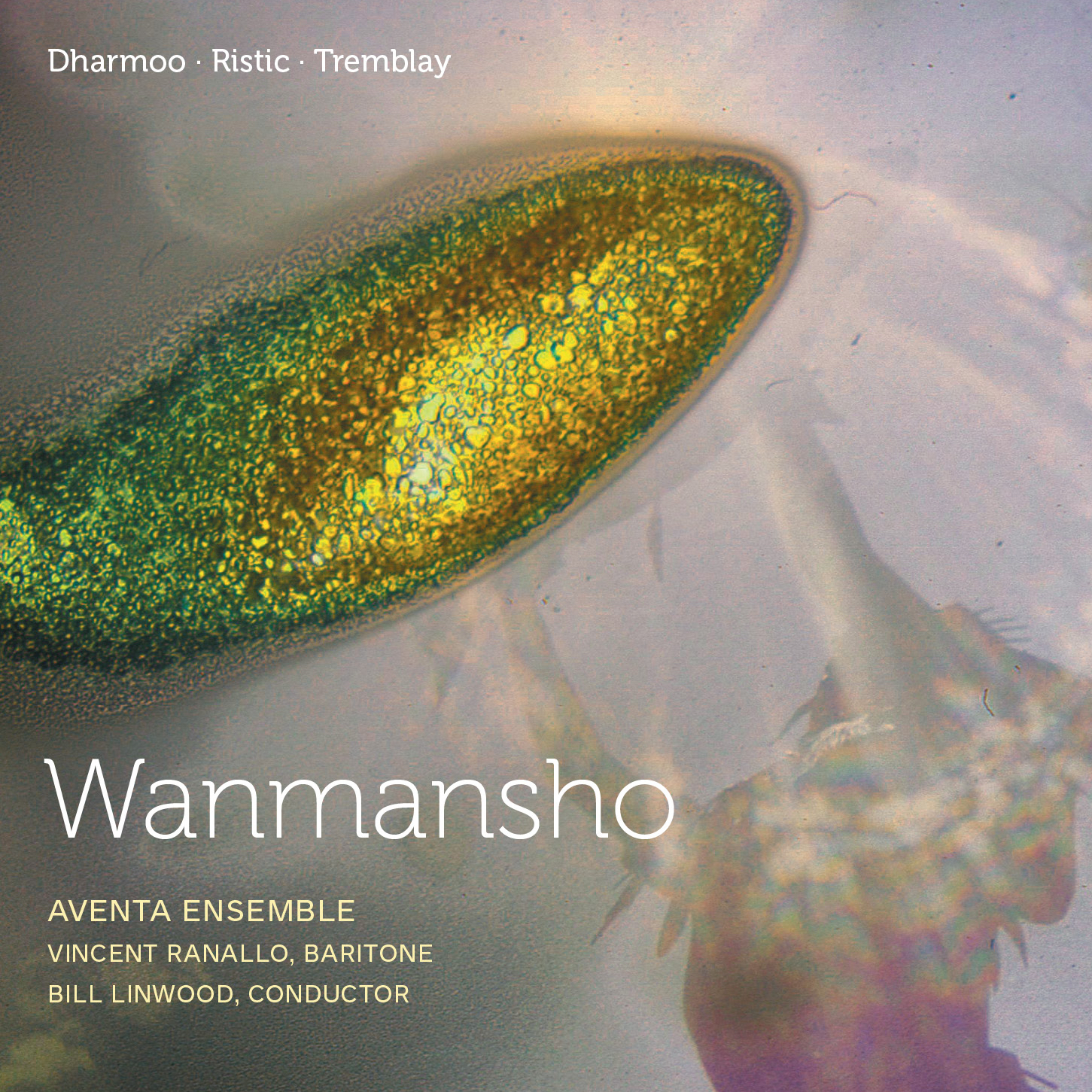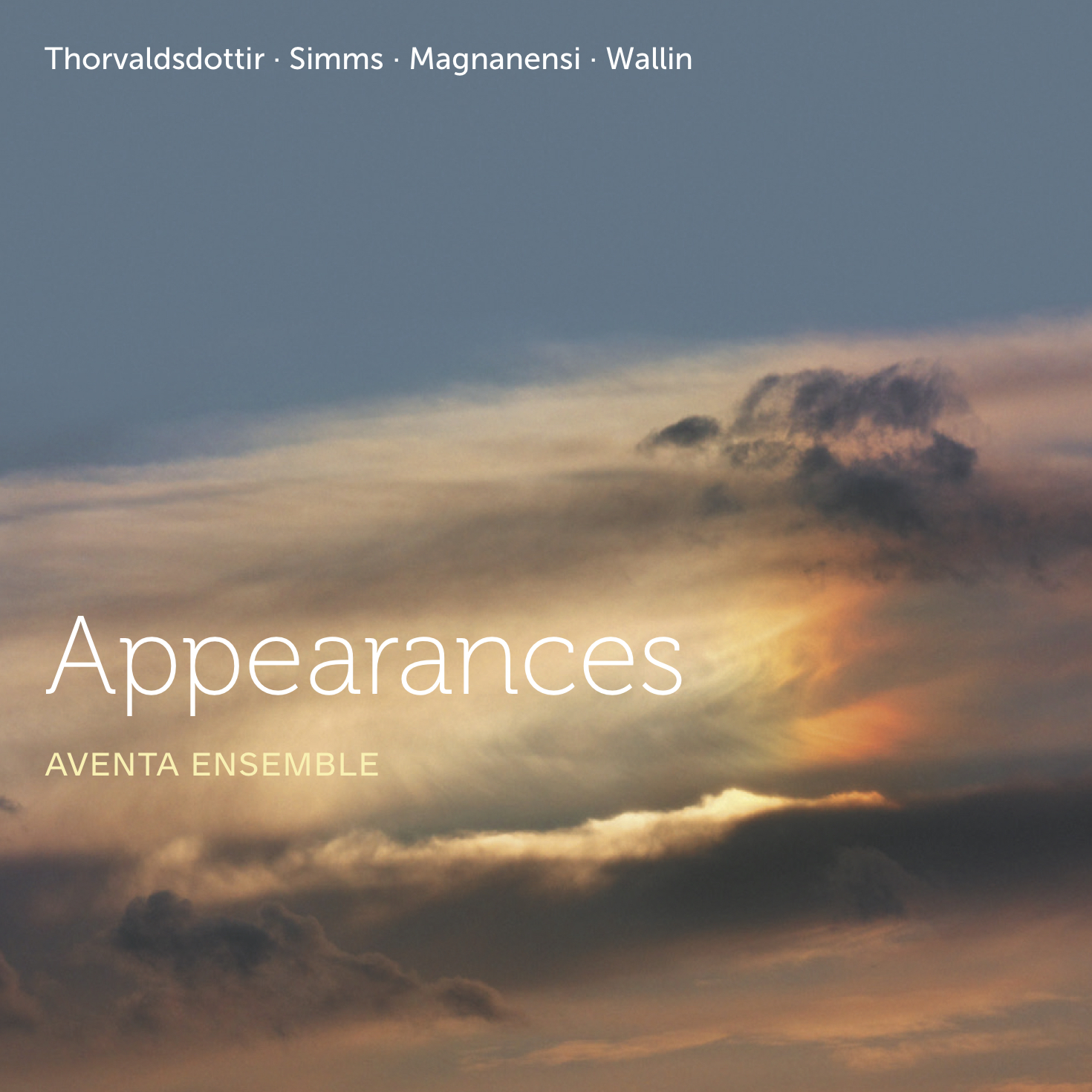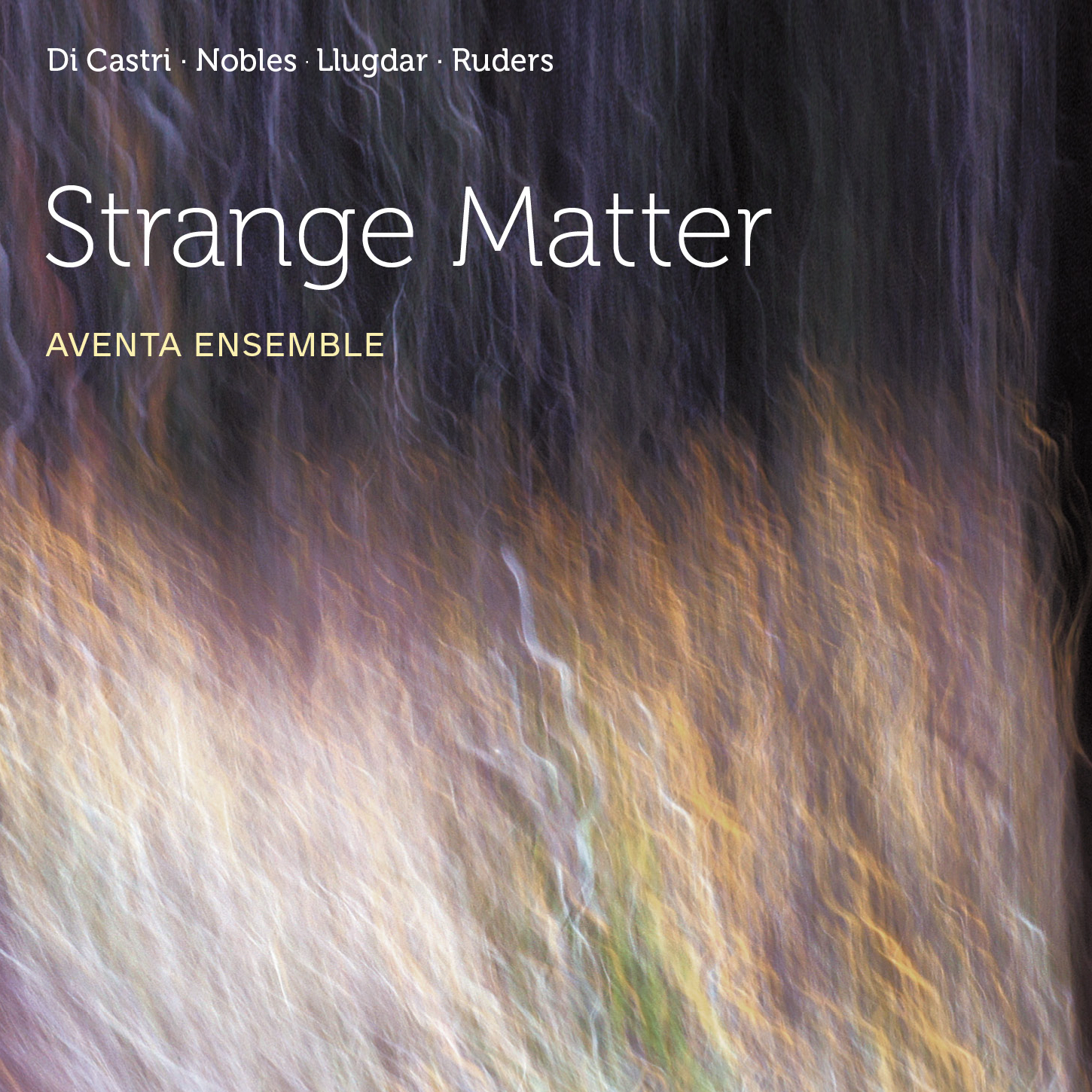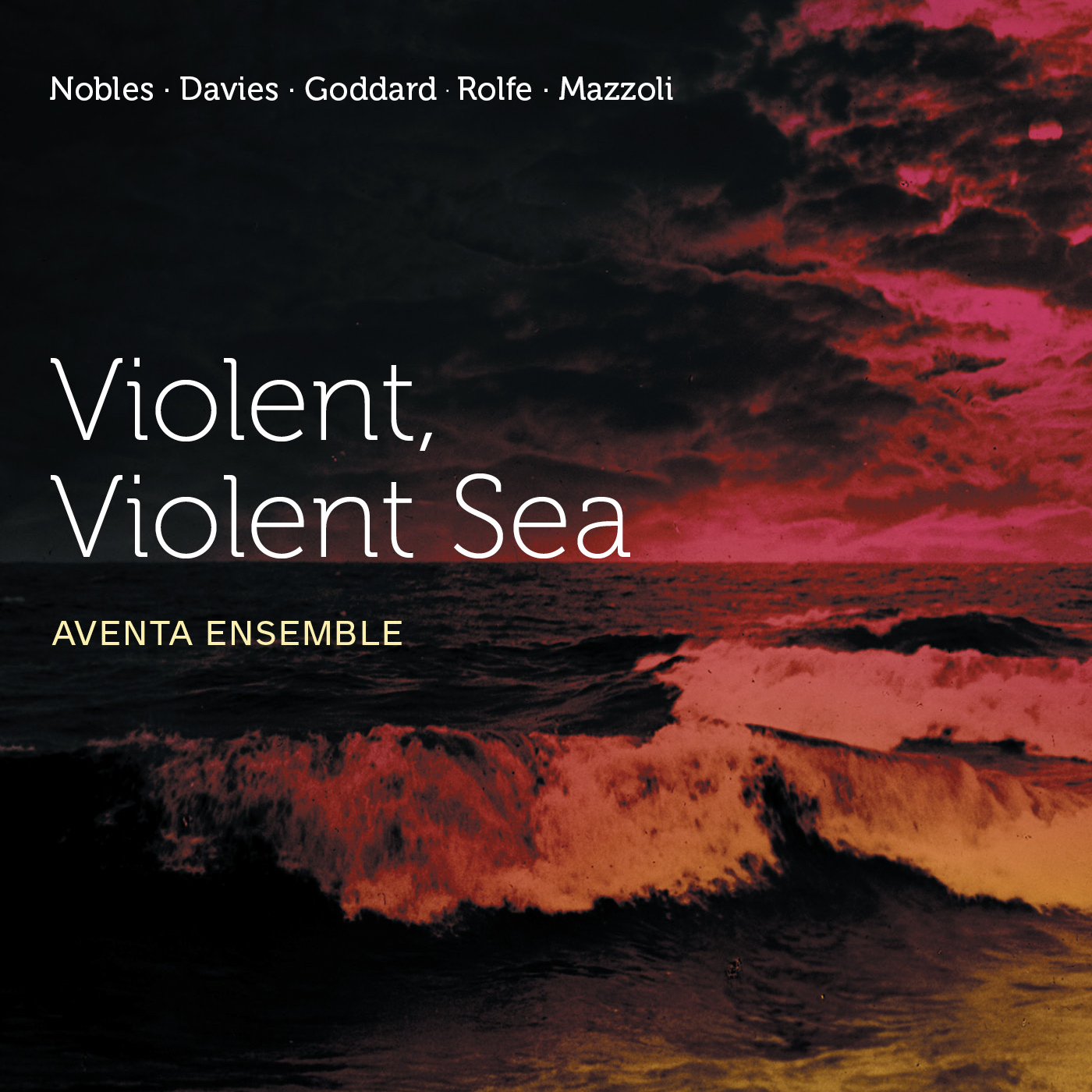Leroux, Murail
TRACKS
1. Mémoire / Erosion for horn and ensemble 1976 – Tristan Murail
Darnell Linwood, horn
2. d(Tourner) for percussion and ensemble 2016-17 – Philippe Leroux
Aiyun Huang, percussion
3.-7. VOI (rex) 2002 – Philippe Leroux
Helen Pridmore, soprano
Total duration: 68:51
PERFORMERS
Aventa Ensemble
Darnell Linwood, horn
Aiyun Huang, percussion
Helen Pridmore, soprano
Bill Linwood, conductor
CREDITS
Produced by Aventa Ensemble
Mémoire / Erosion: Mar. 13, 2016 (Canadian premiere)
d(Tourner): Apr. 23, 2017 (World premiere)
VOI (rex): Recorded Nov. 10-12, 2021
Recording Engineer: James Clemens-Seely
Digital Editing: Bill Linwood
Mastering: by Bob Katz at Digital Domain, Orlando, FL USA
CD design and artwork: Denise Burt, Elevator Graphics
Special Thanks: Gérard Billaudot Éditeur, G. Schirmer and the Music Sales Group
TK510 © 2022 Redshift Music

With a reputation for superb performance and ambitious programming, Aventa has established itself as one of Canada’s leading contemporary music ensembles. Comprised of musicians who are passionate about new music and its place in our culture, Aventa pushes musical boundaries through diverse projects, collaboration, and cultural exchange. https://aventa.ca/
PROGRAM NOTES
Mémoire/Erosion is a typical example of the influence that studio techniques had on instrumental writing at a certain time. The work was born from the observation of the electronic process of the classic “feedback loop”: two tape recorders are connected by a loop of magnetic tape which runs from one to the other – the first records the injected sounds, the second, a few seconds later, reads them and sends them back to the first where they mix with the new injected sounds, and so on ad infinitum. After a while, by dint of being copied, mixed, recopied, the sounds become deformed and eroded. This process serves as a model for a purely instrumental score featuring the French horn. The sounds emitted by the horn are taken up, as in canon, by all the instruments successively, after a period of time which varies (from one to three seconds) during the work. This gives the piece a certain periodicity, a rhythmic base, and at the same time builds a frame that evolves slowly, under the effect of the injection of new elements by the horn. It is the memory system. But memory is disturbed by the phenomenon of erosion: imitations are constantly modified, by leveling off, by budding, by proliferation, by drift within the sound itself. Thus is born a second dynamic principle of the work, that of entropy, which tends to return the music to the state of noise (like the breath and the parasites accumulate on a magnetic tape constantly copied). The music therefore oscillates perpetually between “clear” harmonies, pure timbres, simple and regular rhythms, and complex aggregates, sounds distorted instrumentals, a rhythmic proliferation tending to lack of differentiation. However, the decomposition of the original sound provides new germs which develop, like a plant is born from a seed, and which restart the musical process.
We will also hear some ironically imitative effects of the electronic process that Mémoire/Erosion evokes, for example the effect of instrumental breath with which the piece begins and ends, the final “click” or the sound of “sticky” which follows a saturation effect of the imaginary reinjection device.
Unfortunately, since digital sound and computer editing-mixing, all this poetry of the breath and the click has disappeared… – Tristan Murail
Born in Le Havre in 1947, Tristan Murail received advanced degrees in classical and North African Arabic from the Ecole Nationale des Langues Orientales Vivantes, as well as a degree in economic science, while at the same time pursuing his musical studies. In 1967, he became a student of Olivier Messiaen at the Paris Conservatory, and also studied at the Institut d’Etudes Politiques in Paris. In 1971, he was awarded the Prix de Rome, and later received a First Prize in composition from the Paris Conservatory. In the 1980s, Tristan Murail used computer technology to further his research in the analysis and synthesis of acoustic phenomena. He developed his own system of microcomputer-assisted composition, and then collaborated with Ircam for several years, where he taught composition from 1991 to 1997. In 1997, Tristan Murail was named professor of composition at Columbia University in New York, teaching there until 2010 and is currently guest professor at the Shanghai Conservatory.
Originally from Saskatoon, Darnell Linwood was Principal Horn with the Regina Symphony Orchestra and since moving to Victoria in 2003, she has been active as both a chamber and orchestral musician playing with the Royal Winnipeg Ballet, Calgary Philharmonic, Vancouver Symphony Orchestra and the Victoria Symphony. A strong advocate for new music, Darnell is a co-founder of Aventa Ensemble, where she has been featured on local concerts, tours and recordings. Performance highlights include the world premiere of Giorgio Magnanensi’s Ethuia V for horn and electronics, as well as recordings of Gilles Tremblay’s Le signe du lion (Centredisc) and Pierre Boulez’ Derive II (CBC). She works closely with composers in developing the horn repertoire and presented the world premiere of Sir Peter Maxwell Davies’ horn trio, Stormwatch, Stormfall of which the composer wrote: “the new piece was wonderfully performed, to the extent that I can’t remember a better premiere.”
Aventa gratefully acknowledges the support of the Canada Council for the Arts for the Aventa Ensemble, (d)Tourner (2016-2017) is conceived as a concerto for percussion and ensemble in which the soloist is not in a relationship of rivalry with other musicians, such as is the case in the classical concerto. The role of percussion here is to set the instrumental ensemble in motion, to extend its initiatives or to be the relay. The soloist does not define his identity by their opposition to the group, but by a synergistic relationship with the instrumental ensemble.
The piece explores the principle of circular movement (Turning) as a periodic movement always returning to its starting point. It can be for example on the aspect of the movement of the instrumental sounds in the space of the stage (the instruments are arranged in a particular way), the rotation of the melodic and rhythmic movements, or the transformations of timbre in the phenomena of rotation of bow of stringed instruments. The general form of the work is also conceived according to this principle; it is organized as a braid with four strands, each strand returning to its starting point, to finally go a little further. It is not a question of imagining a perfectly circular world, a perpetual return of sound events, but of diverting [(d) Turning] the very idea of cyclicity, by using it rather as a springboard towards something else. In this sense, the circles are never perfect, they elongate, deform and are called to lead the listener constantly farther, until the moments when they break and lead them to new sound extensions.
Music has always been intended to divert sounds or communication tools from their original functions or their origins. The vocal sounds for example probably have for first mission, before becoming singing, to allow the expression of the language. It is the same for the sounds made by sound synthesis whose initial function is to replace the human voice in the messages delivered by communicating machines. The internet itself, designed for the army to improve its telecommunications, eventually becomes a tool for sound art, when it allows simultaneous musical interpretations in distant places around the globe. Did not Pierre Schaeffer discover the principle of concrete music through the erroneous use of a striped vinyl record?
This diversion of the primary functions of sounds or devices does not necessarily imply that music has no function, but simply that it has no immediate and profitable utility (in terms of music of creation obviously). There is a free element in the work of art in general, which means that it has no direct or expressive social function. That is what makes all its quality; the music gives itself! – Philippe Leroux
Philippe Leroux studied at the CNSMD in Paris with P.Schäeffer, I.Malec and also O.Messiaen and I.Xénakis before being appointed resident at the Villa Médicis in Rome. His 90 works have been performed in numerous American, European and Asian festivals. Performed by the Tonhalle Orchester Zürich, BBC Symphony Orchestra, Orchestre Philharmonique de Radio France, Ensemble Intercontemporain, NEM Montréal, Philharmonia Orchestra, Orchestre Symphonique de Québec, Aventa, Klangforum Wien, he has received distinctions such as the S.C.d.Duca Foundation Prize from the Institut de France, and the A. Honegger Prize from the Fondation de France for the whole of his work. A member of the Royal Society of Canada, he has published numerous articles and lectured at the Collège de France, Harvard, Moscow Conservatory, IRCAM Paris where he taught from 2001 to 2006. Since 2011, he is Associate Professor of Composition at the McGill Schulich School of Music in Montreal. His discography includes some 40 CDs, including 9 monographs.
The ever-evolving Aiyun Huang enjoys a musical life as soloist, chamber musician, researcher, teacher, and producer. She was the First Prize and the Audience Award winner at the Geneva International Music Competition in 2002. Recent performance highlights include engagements with L’Orchestre de la Suisse Romande, Taipei Symphony Orchestra, St. Lawrence String Quartet, and Aventa Ensemble; new collaborations for new works include Roland Auzet, David Bithell, Vivian Fung and Nicole Lizee. An expert in Percussion Theater, her work on the subject has been published in Cambridge Companion to Percussion (2016) and Save Percussion Theater (Mode 242). She currently holds the position of Associate Professor and is the Head of Percussion Program at the University of Toronto. Aiyun is committed to creating a vibrant new music community for the next generation and is the Artistic Director for soundSCAPE, an annual festival for contemporary music and performance exchange in Italy.
Written in 2002, Voi (rex) was composed to poems by Lin Delpierre taken from his collection “Le testament des fruits”. The texts being freely arranged and even sometimes mixed. The sense, however, is still often perceptible and serves the piece’s overall expression, which is also conditioned in some aspects by the verbal structure. At the same time, the poems are used as phonetic material and suggest numerous figurations that occur right through the composition. Even the calligraphy of the letters, prolonged as wave shapes that become archetypal melodies, generates rhythmic-melodic models and spatial trajectories. Finally, some scenic movements are borrowed from how the poems are written out and punctuated.
The piece is in five movements preceded by a short introduction, each movement depending on one or more exclusive characteristics. In the first, a sustained violin note – fixed – serves as reference point for the progressive transformation – mobile – of the noise–discoloured voice (‘a bit of voice stumbling on itself’), of the singing voice and of a sort of spatial ‘vanishing point’. Profiles of all the poem’s letters, applied to the melodic curves of both voice and instruments, give the second movement its identity. These profiles are embodied in a strophic form that has the same structure as the song of the reed warbler or of Stravinsky’s Danse sacrale. The third movement is constituted from harmonic ‘tints’ traversed by blazes and framed by the voice in a form suggested by the text : ‘From part – after dazzlement – to part’. What results is a progression towards white noise, whose ‘whiteness’ displays itself as blinding light. What dominates the fourth movement is a structure: a nested form, but where the ever smaller elements packed into one another are different. A driving force ensures the transition between the sections, whose shapes come from different kinds of wave form. The last movement takes us by song to the word, through a general recapitulation of the different constitutive elements of the preceding movements. Again the poem’s letters generate the melodic profiles of the singer’s scat.
The main idea of the piece is to confront different sorts of model – to, as one might say, model models. To begin with, the singer recorded the poems standing close to gongs and a tam tam, which her voice caused to resonate. That gave, through analysis, the harmonic elements used right through the work. At the same time she recorded an improvised sequence based on various kinds of vocal technique. The recorded sounds were chosen, isolated and reworked only by editing, with no treatment. They were then presented as new models to the singer, who thus had to imitate herself, but after the recording and editing of what she had sung before. There developped in this way a corpus of vocal elements that could then serve as a model for the instruments and electronics. Some technological models (such as, for example, frequency shifting, the doppler effect, freezing within a variable frame certain parts of the sound or models derived from the letters of a poem, or even the rhythmic model provided by the poet’s speed of diction in reading his own texts) were also used in a constant give and take involving voice, instruments and electronic apparatus.
This last principally comprises a computer running Max/MSP, which controls not only the real-time treatments, such as crossed synthesis, harmonizer delays, filtering, frequency shifting, reverberation, spatialization, and so on, but also the triggering of sound files in response to the singer.
The software used in creating the piece was OpenMusic for the whole harmonic, melodic and rhythmic conception, Audiosculpt for representing and analysing certain vocal phenomena and cleaning up sounds, Max/MSP for simulating real-time treatment and PSOLA for morphing the end of the piece. – Philippe Leroux

